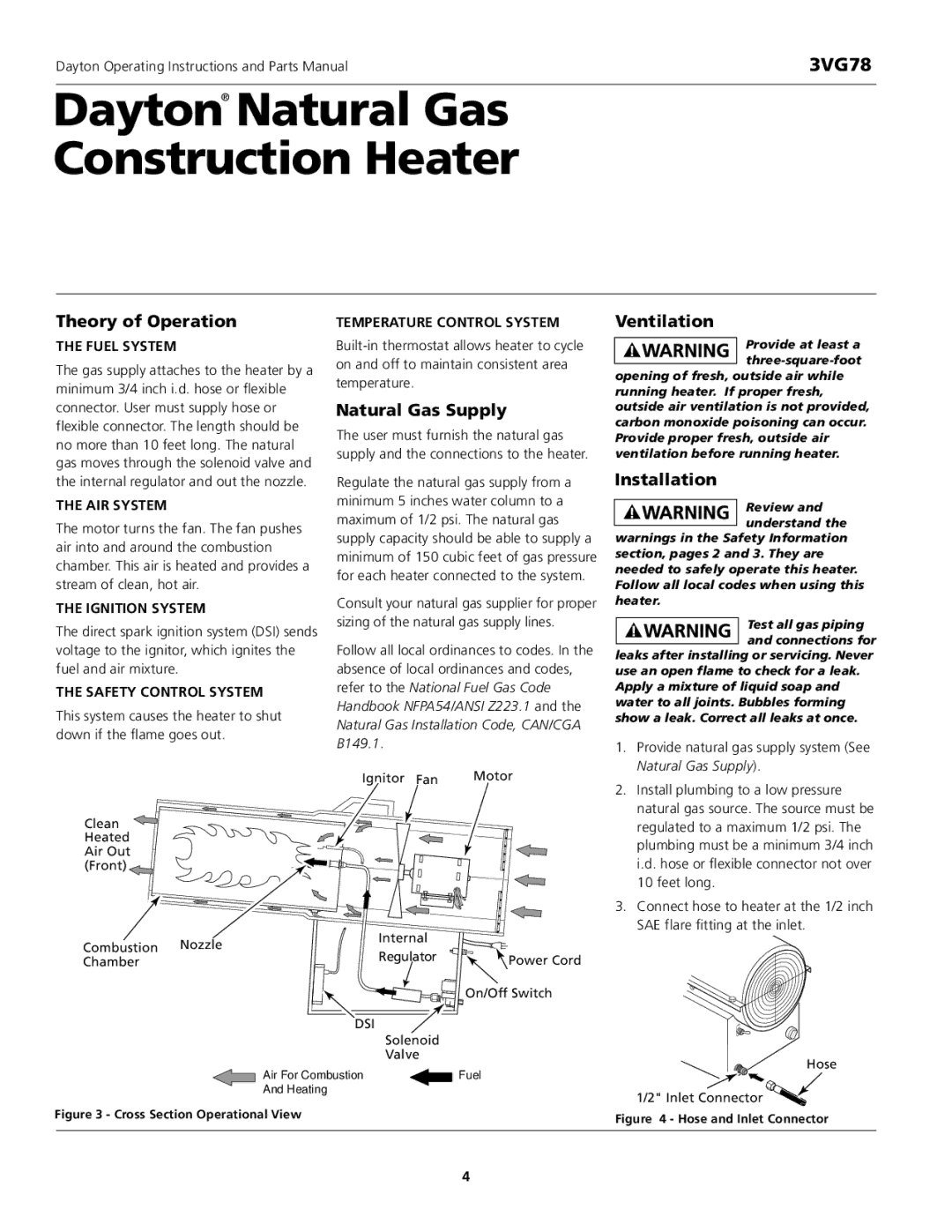3VG78 specifications
The Dayton 3VG78 is a versatile and advanced electric motor that has gained recognition in various industries for its exceptional performance and reliability. Designed with cutting-edge technology, the 3VG78 offers an ideal solution for those seeking efficient and powerful motor capabilities.One of the main features of the Dayton 3VG78 is its robust construction. Built with high-quality materials, this motor ensures durability and longevity, making it suitable for demanding applications. The motor is designed to operate under various environmental conditions, which enhances its adaptability and usability in different settings.
The 3VG78 boasts a premium efficiency rating, which translates to lower energy consumption. This not only reduces operational costs but also makes it an eco-friendly choice for businesses aiming to decrease their carbon footprint. The incorporation of premium efficiency motors aligns with global sustainability goals, prioritizing energy-saving technologies.
Another key characteristic of the Dayton 3VG78 is its compact design, which allows for easy installation in a variety of settings. Whether it’s for HVAC systems, conveyors, or other industrial applications, the motor fits seamlessly into existing setups without requiring extensive modifications. This flexibility is a significant advantage for industries seeking to upgrade their equipment with minimal disruption.
In terms of performance, the Dayton 3VG78 operates at a high RPM, delivering excellent torque output. This capability ensures that machinery functions effectively, enhancing overall productivity. Additionally, the motor can handle both high load conditions and variable speed applications, making it a suitable choice for diverse operational requirements.
The Dayton 3VG78 is also equipped with advanced thermal protection features. This ensures that the motor remains safe during operation, preventing overheating and potential damage. Such technology protects the investment and prolongs the lifecycle of the motor.
Overall, the Dayton 3VG78 combines robust construction, energy efficiency, compact design, and advanced performance technologies. These characteristics make it an ideal choice for a variety of applications within the industrial sector. By choosing the Dayton 3VG78, businesses can enhance their operational efficiency while embracing sustainable practices. As industries evolve and demand higher reliability from equipment, electric motors like the 3VG78 set a benchmark in performance and innovation.

